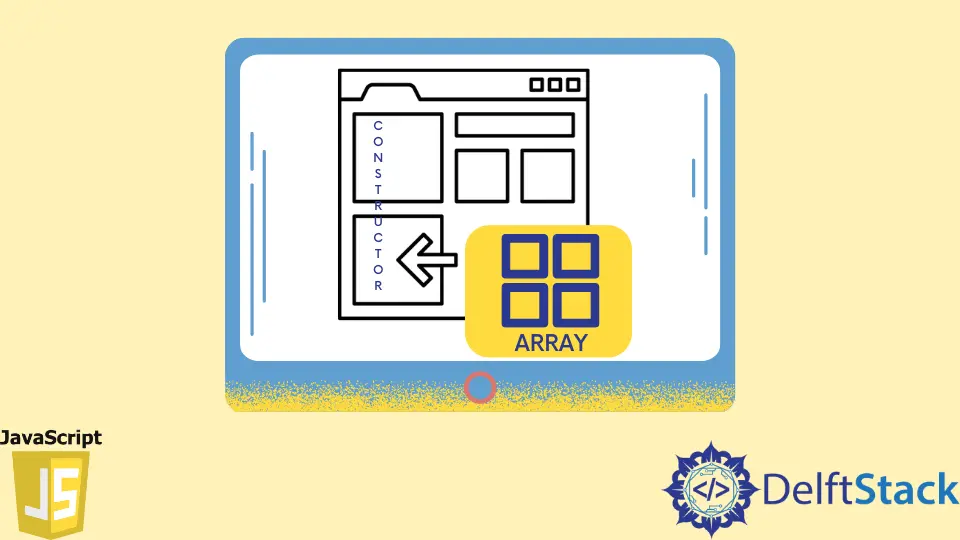JavaScript array.constructor Property
-
Syntax of
array.constructorProperty in JavaScript -
Example 1: Return Function That Created the Array Using
array.constructor -
Example 2: Use
array.constructorto See if Two Objects Are of the Same Type -
Example 3: Use the
array.constructorProperty to Retrieve the Type of anArrayObject -
Example 4: Use
array.constructorProperty WithnameProperty to Retrieve the Class Name of an Array Object

The Array object has an array.constructor property. The array.constructor property gives back an array’s constructor function that created the array object.
The array.constructor property inherits from the prototype of the array object.
Syntax of array.constructor Property in JavaScript
constructor = arrayObj.constructor
Parameters
The JavaScript array.constructor does not take any parameter because it is not a function but a property.
Return
The array.constructor property returns the reference to the function which created the array object.
Example 1: Return Function That Created the Array Using array.constructor
Except for undefined and null, all values in JavaScript have a constructor property. This property gives the constructor function of an object.
Below is an example of the array.constructor property used to get an array-type object’s constructor function.
let alphabets = ["a", "b", "c"];
let return_function = alphabets.constructor;
console.log('return function: ', return_function)
The class of the object is returned by the array function Object() { [native code] } in JavaScript. Because the object used in this case is of type Array.
The constructor property returns the function that formed the object.
Output:
return function: function Array() { [native code] }
Example 2: Use array.constructor to See if Two Objects Are of the Same Type
var arr1 = new String("delf");
var arr2 = new String("stack");
console.log(arr1.constructor === arr2.constructor)
Above, if both objects have the same type, the comparison will return true.
Output:
true
Here, it returned true as both objects arr1 and arr2 were of array type.
Example 3: Use the array.constructor Property to Retrieve the Type of an Array Object
Below is an example showing the alternative to the typeof method in JavaScript. This approach can reduce the number of if-else statements if the type of the objects needs to be categorized.
Here, we will only classify an object to see if it is an array-type object or something else.
myObject = ['d', 'e', 'l', 'f', 't'] //Array
if (myObject.constructor === Array) {
// code executed when myVariable is a number
console.log(`the ${myObject} type is not an array.`);
} else {
console.log(`the ${myObject} type is not an array.`)
}
Output:
the d,e,l,f,t type is not an array.
Now, if myObject changed to a string type, it gives a different output.
myObject = 'sdf' //string
if (myObject.constructor === Array) {
// code executed when myVariable is a number
console.log(`the ${myObject} type is not an array.`);
} else {
console.log(`the ${myObject} type is not an array.`)
}
Output:
the sdf type is not an array.
Example 4: Use array.constructor Property With name Property to Retrieve the Class Name of an Array Object
The array.constructor property also has a property of name, if used after the constructor property of the object, tells the name of the class. The below example tells the class of the array-type object.
myObject = ['d', 'e', 'l', 'f', 't']
console.log(myObject.constructor.name)
Output:
Array